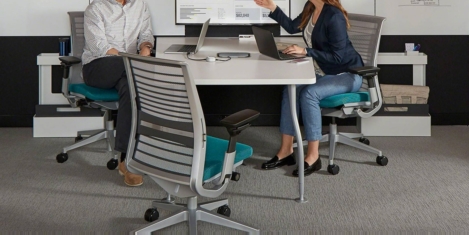April 13, 2017
Over half of employers report increase in workplace stress and mental ill health 0
More than half (55 percent) of employers have reported an increase in the level of stress and mental health related illnesses at work, according to the annual Benefits and Trends Survey from Aon. The survey claims that while 72 percent of employers believed they had a key role in influencing employee health in 2015, this decreased to 67 percent in 2016. The survey did find that employers have tactics to support health and wellbeing – branded wellness programmes (21 percent) and flexible working (20 percent) being the most popular – but these may be disconnected to what employees and the business actually need. Not surprisingly then, 58 percent would like a better understanding of the impacts of health risks, while 72 percent now use some form of data to drive health and wellbeing strategy. The most popular sources were absence data (57 percent) and employee engagement surveys (45 percent). In addition, the number of employers that have considered managing a known health risk is on the increase – rising to 48 percent from 25 percent in the last two years (42 percent in 2015).








 London’s office workers are looking for shorter commutes, demanding more collaborative and networking opportunities while at work and better access to green space, retail, leisure and wellness; all of which could present a huge opportunity for the less congested outer London boroughs, a new report suggests. According to Savills latest London Mixed Use Development Spotlight, as employers and employees alike demand more from their workplace and their work- life balance, London’s outer boroughs could reap the benefits by providing greater flexible office space and affordable homes at a variety of price points. According to Oxford Economics, employment in sectors that tend to occupy co-working spaces is set to rise by 20,000 people in the outer London boroughs over the next five years, which equates to a gross additional need of 1.6 million sq ft (148,644 sq m) of office space.
London’s office workers are looking for shorter commutes, demanding more collaborative and networking opportunities while at work and better access to green space, retail, leisure and wellness; all of which could present a huge opportunity for the less congested outer London boroughs, a new report suggests. According to Savills latest London Mixed Use Development Spotlight, as employers and employees alike demand more from their workplace and their work- life balance, London’s outer boroughs could reap the benefits by providing greater flexible office space and affordable homes at a variety of price points. According to Oxford Economics, employment in sectors that tend to occupy co-working spaces is set to rise by 20,000 people in the outer London boroughs over the next five years, which equates to a gross additional need of 1.6 million sq ft (148,644 sq m) of office space.





 It is two years since the introduction of Shared Parental Leave (SPL), where couples were given the ability to share leave surrounding the arrival of a new addition to their family; and while sharing leave is seen to have a profound beneficial impact for the family, there are still plenty of barriers. According to
It is two years since the introduction of Shared Parental Leave (SPL), where couples were given the ability to share leave surrounding the arrival of a new addition to their family; and while sharing leave is seen to have a profound beneficial impact for the family, there are still plenty of barriers. According to 


















April 7, 2017
Flexible working is not a magic bullet for workplace ills 0
by Charles Marks • Comment, Flexible working
(more…)